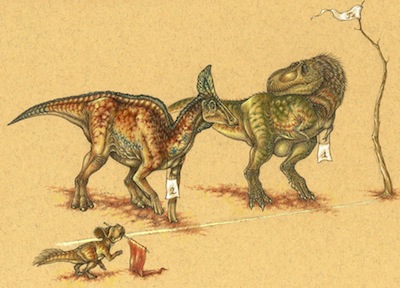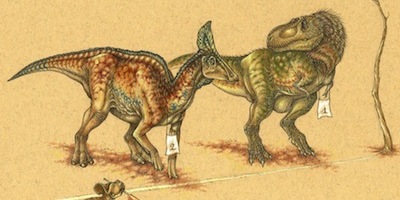
Analysis of leg bones in hadrosaurs (duck-billed dinosaurs) shows that their muscles attached in such as way as to improve endurance, rather than top speed. This slow-and-steady strategy may have helped them outrun predators like T-rex over long distances. (Image credit: Niroot Puttapipat)
A new paper indicates that hadrosaurs – also known as duck-billed dinosaurs – were built for endurance rather than speed, and that this helped them avoid predators despite their lack of horns or armour.
Computer analysis of leg bones showed that a critical muscle known as the caudofemoralis attached lower on the thigh in hadrosaurs than in T-rexes. The extra leverage provided by this arrangement suggests that while T-rexes were capable of great bursts of speed, hadrosaurs could outrun them over long distances, especially if their herd members kept an eye out for predators.
The situation is analogous to the way modern zebras use herd mentality and endurance to outrun lions, even though the latter can run faster over short distances.
Original research paper published in Hadrosaurs (compendium of research papers, published by Indiana University Press) on November 5, 2014.
Names and affiliations of selected authors

